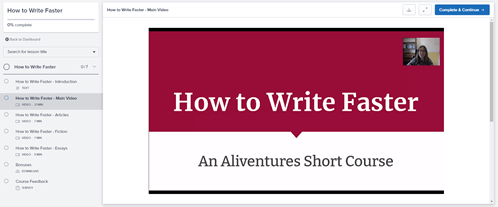Want to write faster (and enjoy it more)? This week, How to Write Faster is on sale for $10 instead of $15 with the coupon code finishyourdraft.
One issue that often crops up for novelists is how to handle parts of the story that you're stuck on.
Let's say you've written a scene where your characters have a blazing argument. You know the next scene is going to be an incredibly awkward party ... but you can't figure out how best to write it.
Should you stop there until you figure it out? Or should you skip that part of the story and move on?
Either option is perfectly valid.
Option #1: Sticking With the "Stuck" Part of Your Story
Sometimes, you'll want to have a go at a tricky scene, even if you're not sure you
can do it justice. Once it's down on the page, you can improve it.
I think this is particularly true if you're finding yourself skipping several scenes. That's fine if your writing process is one where you hop around and stitch everything together at the end. But if you're a more linear writer, you're going to end up with a first draft that feels like Swiss cheese: there'll be holes all
through it.
If you're going to plough ahead with the scene, do some brainstorming first. Jot down ideas of how it could go, where it might be set, what characters may be involved, and so on. You're not committing to anything ... and exploring lots of different possibilities can make it easier to find a good way forward.
Option #2: Skipping Over the "Stuck" Bit and Getting On With the Story
In other cases, you might feel most comfortable skipping the bit that you're stuck on.
I often do this if I've
ended up going on a bit of a tangent in the first draft. Instead of laboriously writing my characters back to where they should be, I'll put in a "note to self" to change things in the redraft, and I'll pick up at the next interesting point in the plot.
You might also skip bits if you know you're going to end up down a research rabbithole, and you just want to get the draft
done.
There's no rule that says you need to write everything in order. If you do want to avoid leaving a gap in your story, you could write a bullet-point outline for the bit you're skipping ... that way, it'll be easier to come back to in Draft 2.
Neither option is better or worse: they'll suit different writers at different times. What matters is that, one way or another, you're making forward progress with your novel.

